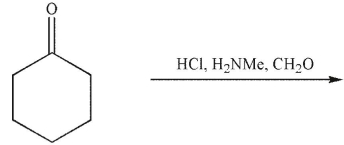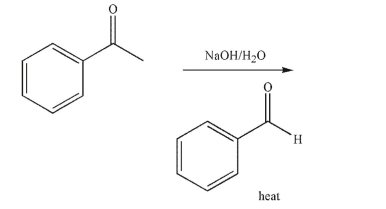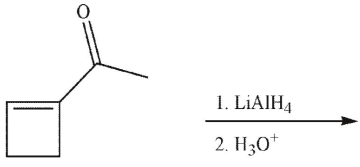A) I
B) I and II
C) II and III
D) IV
E) I and IV
Correct Answer

verified
Correct Answer
verified
Essay
In aqueous base, the chiral ketone shown here racemizes.Provide an explanation. 
Correct Answer

verified
Initially, a planar enolate is formed.Th...View Answer
Show Answer
Correct Answer
verified
View Answer
Multiple Choice
Which of the following is a mechanistic intermediate in this Mannich reaction? 
A) ![]()
B) ![]()
C) ![]()
D) ![]()
E) ![]()
Correct Answer

verified
Correct Answer
verified
Essay
Draw a mechanism for the following transformation.Include all necessary lone pairs of electrons,
curved arrows, and nonzero formal charges. 
Correct Answer

verified
Correct Answer
verified
Essay
What is the product of the following reaction? 
Correct Answer

verified
Correct Answer
verified
Essay
Draw a mechanism for the following transformation.Include all necessary lone pairs of electrons,
curved arrows, and nonzero formal charges. 
Correct Answer

verified
Correct Answer
verified
Essay
Draw a mechanism for the transformation shown here.Include any necessary lone pairs of
electrons, curved arrows, and nonzero formal charges. 
Correct Answer

verified
Correct Answer
verified
Multiple Choice
Why should lithium diisopropylamide (LDA) be used in enolate alkylation reactions?
A) LDA completely converts one equivalent of carbonyl to enolate.
B) LDA is too bulky to act as a nucleophile.
C) Lithium complexation with the enolate oxygen can reduce O-alkylation.
D) LDA will selectively remove the least hindered protons from the carbonyl.
E) All these reasons are valid.
Correct Answer

verified
Correct Answer
verified
Multiple Choice
Which of these structures is the product of the reaction? 
A) ![]()
B) ![]()
C) ![]()
D) ![]()
E) None of these structures is the product of the reaction.
Correct Answer

verified
Correct Answer
verified
Multiple Choice
What is the product of this reaction?

A) ![]()
B) ![]()
C) ![]()
D) ![]()
E) ![]()
Correct Answer

verified
Correct Answer
verified
Multiple Choice
Which of the following would be products of the following crossed aldol condensation reaction? 
A) ![]()
B) ![]()
C) ![]()
D) ![]()
E) All would be products
Correct Answer

verified
Correct Answer
verified
Showing 61 - 71 of 71
Related Exams